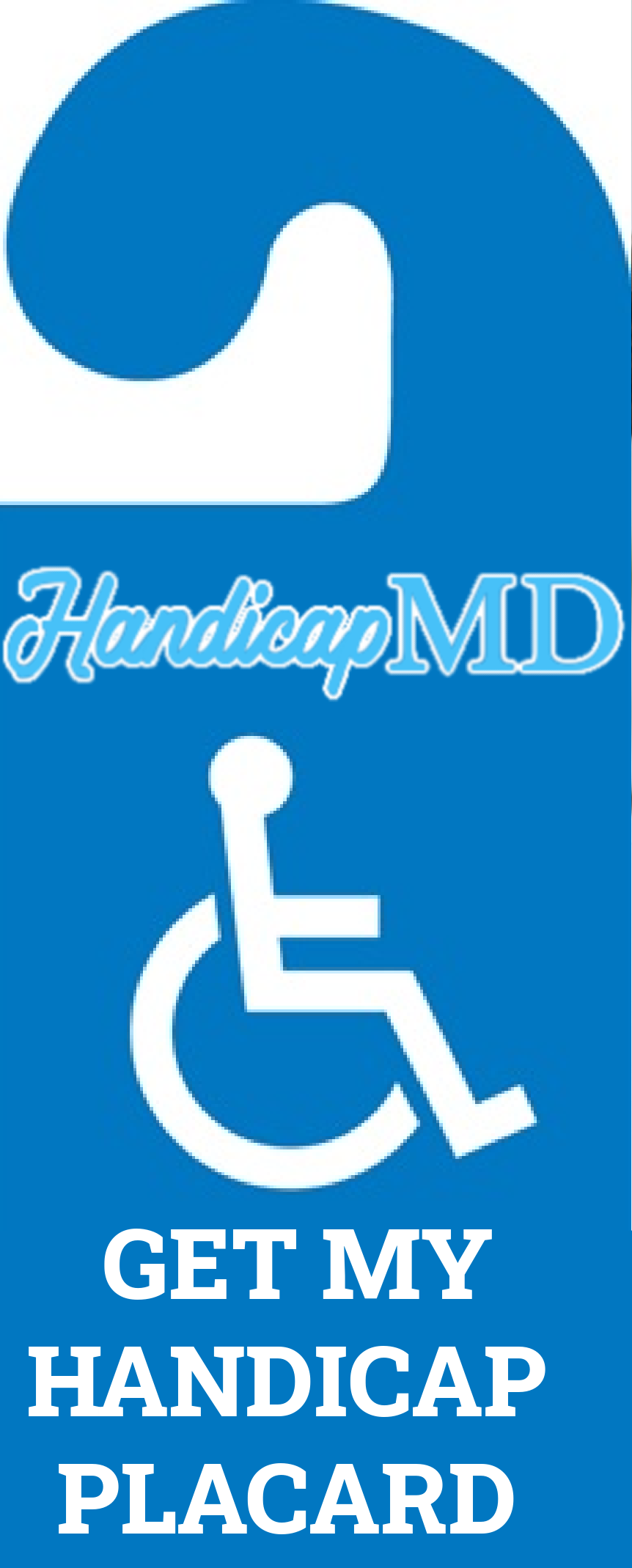
Cardiovascular Conditions & DMV Handicap Parking Permits
Cardiovascular disease is a leading cause of disability and death worldwide, with millions of individuals affected by various heart and blood vessel conditions. These diseases not only impact the quality of life but also pose significant challenges to mobility and daily activities. For many people suffering from cardiovascular conditions, obtaining a disability pass from the Department of Motor Vehicles (DMV) can be a crucial step in managing their health and maintaining independence.
This article will delve into the topic of cardiovascular conditions and how they relate to obtaining a DMV disability pass. We will explore what cardiovascular disease means, the different types of cardiovascular conditions, the most common forms, and why cardiovascular disease is a significant health concern. Additionally, we will discuss the symptoms associated with these conditions and the process of applying for a handicap parking permit, highlighting the eligibility criteria and steps involved.
Understanding Cardiovascular Condition
The term "cardiovascular" refers to the heart (cardio) and the blood vessels (vascular) that circulate blood throughout the body. The cardiovascular system is responsible for delivering oxygen and nutrients to tissues, removing waste products, and maintaining overall bodily function. It is composed of the heart, arteries, veins, and capillaries, all of which work together to ensure proper circulation.
Cardiovascular health is crucial for overall well-being. When this system is compromised by disease or dysfunction, it can lead to a wide range of health issues, including reduced mobility, fatigue, and a heightened risk of life-threatening events such as heart attacks or strokes.
How Many Cardiovascular Conditions Are There?
Cardiovascular disease (CVD) is a broad term that encompasses a variety of conditions affecting the heart and blood vessels. There are numerous cardiovascular conditions, each with its specific characteristics, causes, and treatments. Some of the most common types of cardiovascular diseases include:
Coronary Artery Disease (CAD): This is the most common type of heart disease, characterized by the narrowing or blockage of the coronary arteries due to plaque buildup. It can lead to chest pain (angina), heart attacks, and other complications.
Heart Failure: Also known as congestive heart failure, this condition occurs when the heart is unable to pump blood effectively, leading to symptoms such as shortness of breath, fatigue, and fluid retention.
Arrhythmias: These are irregular heartbeats that can be too fast, too slow, or erratic. Common arrhythmias include atrial fibrillation, tachycardia, and bradycardia.
Valvular Heart Disease: This condition involves damage to one or more of the heart's valves, leading to improper blood flow. Common examples include mitral valve prolapse, aortic stenosis, and regurgitation.
Peripheral Artery Disease (PAD): PAD occurs when the arteries that supply blood to the limbs become narrowed or blocked, leading to pain, numbness, and increased risk of infection.
Hypertension (High Blood Pressure): While often considered a separate condition, hypertension is a significant risk factor for many cardiovascular diseases, including stroke, heart attack, and heart failure.
Cardiomyopathy: This group of diseases affects the heart muscle, causing it to become enlarged, thickened, or stiff, which can lead to heart failure or arrhythmias.
Congenital Heart Defects: These are structural problems with the heart that are present at birth. They can range from minor defects that require no treatment to severe conditions that necessitate surgery.
Aortic Aneurysm and Dissection: These conditions involve the weakening or tearing of the aorta, the body's main artery, which can lead to life-threatening internal bleeding.
Stroke: While primarily a condition of the brain, stroke is closely related to cardiovascular health as it is often caused by blocked or ruptured blood vessels in the brain.
What is the Most Common Cardiovascular Condition?
The most common cardiovascular condition is Coronary Artery Disease (CAD). CAD occurs when the coronary arteries, which supply blood to the heart muscle, become narrowed or blocked due to the buildup of plaque, a combination of fat, cholesterol, and other substances. This condition can lead to chest pain (angina), heart attacks, and, if left untreated, can result in heart failure.
Why Coronary Artery Disease is So Prevalent
CAD is prevalent due to several factors, including lifestyle choices and genetic predispositions. Major risk factors for CAD include:
- Unhealthy Diet: Diets high in saturated fats, trans fats, cholesterol, and sodium can contribute to the development of plaque in the arteries.
- Physical Inactivity: Lack of regular physical activity can lead to obesity, high blood pressure, and high cholesterol, all of which increase the risk of CAD.
- Smoking: Tobacco use damages the lining of the arteries, contributing to the buildup of plaque and increasing the risk of CAD.
- High Blood Pressure: Hypertension forces the heart to work harder, leading to damage to the arteries and increasing the risk of heart disease.
- Diabetes: High blood sugar levels can damage blood vessels and increase the likelihood of developing CAD.
- Family History: A family history of heart disease can increase the risk of developing CAD.
Why is Cardiovascular Disease a Health Concern?
Cardiovascular disease is a major health concern because it is the leading cause of death worldwide, responsible for approximately 17.9 million deaths each year, according to the World Health Organization (WHO). The impact of cardiovascular disease extends beyond mortality; it is also a leading cause of disability and reduced quality of life.
The Burden of Cardiovascular Disease
Economic Impact: Cardiovascular disease places a significant burden on healthcare systems and economies. The cost of treating cardiovascular conditions, including hospitalizations, medications, surgeries, and rehabilitation, is substantial. Additionally, the loss of productivity due to illness and premature death further strains economies.
Quality of Life: Individuals living with cardiovascular disease often experience a reduced quality of life. Symptoms such as chest pain, shortness of breath, fatigue, and mobility limitations can make daily activities challenging. The psychological impact, including anxiety and depression, can also be significant.
Increased Risk of Other Health Issues: Cardiovascular disease is often associated with other chronic conditions, such as diabetes, chronic kidney disease, and obesity. Managing multiple chronic conditions can be complex and requires comprehensive care.
Global Disparities: The burden of cardiovascular disease is not evenly distributed. Low- and middle-income countries experience the highest rates of cardiovascular deaths, often due to limited access to healthcare, preventive measures, and treatment options.
What Are the Symptoms of Cardiovascular Disease?
The symptoms of cardiovascular disease vary depending on the specific condition and the severity of the disease. However, some common symptoms that may indicate a cardiovascular issue include:
1. Chest Pain (Angina)
- Chest pain, also known as angina, is a common symptom of coronary artery disease. It is often described as a feeling of pressure, tightness, or squeezing in the chest. The pain may radiate to the arms, neck, jaw, or back. Angina typically occurs during physical activity or stress and is relieved by rest.
2. Shortness of Breath
- Shortness of breath, also known as dyspnea, can occur with or without chest pain. It is a common symptom of heart failure, valvular heart disease, and other cardiovascular conditions. Shortness of breath may worsen with exertion and may also occur when lying flat.
3. Fatigue
- Fatigue is a common symptom of many cardiovascular conditions, including heart failure and cardiomyopathy. It occurs due to the heart’s inability to pump blood effectively, leading to decreased oxygen supply to the muscles and organs.
4. Palpitations
- Palpitations are the sensation of a rapid, fluttering, or pounding heartbeat. They can be a symptom of arrhythmias, such as atrial fibrillation or tachycardia. Palpitations may be accompanied by dizziness, lightheadedness, or fainting.
5. Swelling (Edema)
- Swelling, particularly in the legs, ankles, and feet, is a common symptom of heart failure. It occurs when the heart is unable to pump blood effectively, leading to fluid buildup in the tissues.
6. Dizziness or Lightheadedness
- Dizziness or lightheadedness can occur in individuals with cardiovascular disease, especially in those with arrhythmias or low blood pressure. It may be a sign of reduced blood flow to the brain.
7. Nausea or Vomiting
- Nausea or vomiting can be a symptom of a heart attack, particularly in women. It may occur in conjunction with other symptoms, such as chest pain or shortness of breath.
8. Cold Sweats
- Cold sweats, often described as sudden, clammy perspiration, can be a sign of a heart attack. It is important to seek immediate medical attention if this symptom occurs along with chest pain or other signs of a heart attack.
9. Pain or Discomfort in the Upper Body
- Pain or discomfort in the arms, back, neck, jaw, or stomach can be a symptom of a heart attack. This pain may occur suddenly or gradually and may come and go.
10. Difficulty Exercising
- Individuals with cardiovascular disease may experience difficulty exercising or engaging in physical activity due to shortness of breath, chest pain, or fatigue. Reduced exercise tolerance can be an early sign of a heart condition.
How Cardiovascular Conditions Qualify for a DMV Handicap Parking Permit
Individuals with cardiovascular conditions that limit their mobility may qualify for a DMV disability pass. The criteria for obtaining a permit vary by state, but generally, an individual must have a condition that impairs their ability to walk or requires the use of assistive devices, such as a cane, walker, or wheelchair.
Common Criteria for Cardiovascular-Related Handicap Permits
Severe Shortness of Breath: Individuals with cardiovascular conditions that cause severe shortness of breath at rest or with minimal exertion may qualify for a permit.
Inability to Walk 200 Feet Without Rest: Many states consider an individual eligible for a disability pass if they are unable to walk 200 feet without stopping to rest due to a cardiovascular condition.
Dependence on Supplemental Oxygen: Individuals who require supplemental oxygen due to cardiovascular disease may qualify for a disability pass.
Use of Assistive Devices: Individuals who use assistive devices, such as a cane, walker, or wheelchair, due to cardiovascular disease may be eligible for a permit.
Heart Failure or Cardiomyopathy: Individuals with advanced heart failure or cardiomyopathy, who experience significant limitations in physical activity, may qualify for a disability pass.
Applying for a DMV Handicap Parking Permit for Cardiovascular Conditions
The process of applying for a DMV handicap parking permit involves several steps, which may vary slightly depending on the state. Generally, the process includes the following:
1. Obtain a Medical Certification
- To apply for a disability tag, individuals must first obtain medical certification from a healthcare provider. The healthcare provider must complete a form or provide documentation that verifies the individual's cardiovascular condition and the extent of their mobility impairment.
2. Complete the Application Form
- Individuals must complete an application form provided by their state's DMV or equivalent agency. The form typically requires personal information, details about the medical condition, and the healthcare provider’s certification.
3. Submit the Application
- The completed application form, along with the medical certification, must be submitted to the DMV. Some states allow applications to be submitted online, while others require submission by mail or in person.
4. Pay the Required Fee
- Some states charge a fee for processing the disability tag application. The fee may vary depending on whether the permit is temporary or permanent.
5. Receive the Permit
- Once the application is approved, the DMV will issue a disability tag. The permit may be in the form of a placard that can be displayed on the vehicle’s rearview mirror or a special license plate.
6. Renew the Permit as Needed
- Disability tags typically have an expiration date. Individuals with temporary permits may need to renew their permits periodically, while those with permanent conditions may receive permits with longer validity periods.
The Importance of a Handicap Parking Permit for Individuals with Cardiovascular Conditions
For individuals with cardiovascular conditions, a disability tag can significantly improve their quality of life by providing easier access to essential services and facilities. The permit allows individuals to park in designated accessible parking spaces, which are typically closer to entrances and exits of buildings, reducing the distance they need to walk.
Benefits of a Handicap Parking Permit
Reduced Physical Strain: Cardiovascular conditions can make walking long distances difficult or impossible. A disability tag allows individuals to park closer to their destination, reducing the physical strain on their heart and lungs.
Increased Independence: A disability tag enables individuals with cardiovascular conditions to maintain their independence by allowing them to access public spaces and services more easily.
Improved Safety: Parking in designated accessible spaces reduces the risk of falls, accidents, and other safety hazards for individuals with cardiovascular conditions, especially those who use assistive devices.
Access to Healthcare: Individuals with cardiovascular conditions often require frequent visits to healthcare providers. A disability tag ensures they can park close to medical facilities, making it easier to attend appointments and receive necessary care.
Peace of Mind: Knowing that accessible parking is available provides peace of mind for individuals with cardiovascular conditions, allowing them to plan their outings with confidence.
Frequently Asked Questions
- How long does it take to get a DMV disability placard?
- The processing time varies depending on the state and the volume of applications. In some cases, you may be able to get your placard on the same day that you apply, while in others, it may take several weeks.
- Is a disability placard valid in all states?
- disability placard are generally valid in all states, but it's important to check the regulations in the state where you will be using the permit.
- How long is a disability placard valid?
- Disability placards are typically valid for a few years, after which you will need to renew your permit.
- Can I use my disability placard in any vehicle?
- Disability placards are assigned to individuals, not vehicles. This means that you can use your permit in any vehicle that you are traveling in, as long as you are the person using the permit.
- What if my condition improves and I no longer need a disability permit?
- If your condition improves and you no longer need a disability placard, you should notify the DMV and return your permit. This allows the placard to be reassigned to someone who needs it.
- Can I use a disability permit for someone else who has a disability?
- disability placards are assigned to individuals, and it is illegal to use someone else's permit, even if they have a disability.
Conclusion
Cardiovascular conditions are a significant health concern, affecting millions of individuals worldwide. These conditions can severely impact mobility, making it challenging to carry out daily activities. For those living with cardiovascular disease, obtaining a DMV handicap parking permit can be a vital tool in managing their health and maintaining their independence.
The process of applying for a disability tag involves obtaining medical certification, completing an application, and submitting it to the DMV. Once approved, the permit provides access to designated accessible parking spaces, reducing physical strain and improving quality of life.
Understanding the symptoms of cardiovascular disease and the criteria for qualifying for a disability tag is essential for individuals seeking to manage their condition effectively. By obtaining a permit, individuals with cardiovascular conditions can enjoy greater independence, safety, and access to essential services.
References
- World Health Organization (WHO). "Cardiovascular Diseases (CVDs)." Available at: https://www.who.int/news-room/fact-sheets/detail/cardiovascular-diseases-(cvds)
- American Heart Association (AHA). "Types of Cardiovascular Disease." Available at: https://www.heart.org/en/health-topics/consumer-healthcare/what-is-cardiovascular-disease
- Centers for Disease Control and Prevention (CDC). "Heart Disease Facts." Available at: https://www.cdc.gov/heartdisease/facts.htm
- Mayo Clinic. "Coronary Artery Disease - Symptoms and Causes." Available at: https://www.mayoclinic.org/diseases-conditions/coronary-artery-disease/symptoms-causes/syc-20350613
- Cleveland Clinic. "Heart Failure - Overview." Available at: https://my.clevelandclinic.org/health/diseases/17069-heart-failure-understanding-heart-failure
.png)






